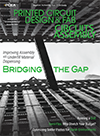Book Reviews
Book Review: Lead-Free Electronic Solders
Published: 27 August 2007
by Mike Buetow
Lead-Free Electronic Solders
A Special Issue of the Journal of Materials Science: Materials in Electronics
A Special Issue of the Journal of Materials Science: Materials in Electronics
Author: K.N. Subramanian, Editor
375 pages
Publisher: Springer
Publication date: 2007
This 375-page text is more a collection of papers than a book, but its specific focus is on lead-free material science and is ideal for engineers. It is for the person who wants to go past the alloy types and understand the elements and their interactions during the assembly process and potential joint reliability.
All papers were produced for a special issue of the Journal of Materials Science, Materials in Electronics. The publisher felt this would make a valued contribution to the wider marketplace, and I agree. There is a fair amount of duplication in the text on the whys of lead-free, but this does not detract from the final compilation. The main part of the text is devoted to soldering materials, with all the most common alloys illustrated and supported with mechanical data and phase diagrams.
Researchers from the chemical engineering department of Tsing Hua University outline most of the common alloy data gathered from a wide source of papers and reports. They compare the information and highlight differences in the available data. Where possible, they suggest where more investigations are necessary for a better understanding of each material set.
Laura Turbini provides a chapter on soldering materials and their possible impact on corrosion at elevated temperatures. Because of her long interest and research work into Conductive Anodic Filament CAF formation, this is covered with good examples of the way in which this form of electrical short can occur. It has been demonstrated in many studies that, where greater stress is put on laminate, it is possible for separation of the glass and epoxy bundles to open up a path for CAF formation. However, some simple design rules often are not used to increase product reliability.
A paper by Darrel Frear of Freescale outlines well the issues facing consumer electronics, and the most common or potential failure modes. The text is well illustrated with examples of typical joints and solder interface structures. Care is taken to discuss one of the most challenging tests with lead-free alloy drop testing. A draft standard from the IPC/JEDEC is available as a second source of information.
Other chapters consider tin whiskers, tin pest, electromigration in lead-free solder joints, and the impact of RoHS on high-performance electronics. The paper on high-performance products is split into two sections and authored by Karl Puttlitz and George Galyon. It covers other interconnection methods that may be impacted by RoHS. Karl, originally with IBM, is now working as a consultant after his retirement; he co-edited other excellent books on lead-free and BGA when he was still at IBM.
This is not a holiday read for most people, but there is a lot of value in the information to research and process engineers who want to go deeper into the subject.
Press Releases
- Saki to Highlight Advanced Inspection Innovation at 39th Nepcon Japan
- ViTrox Welcomes Gemaddis as a New Sales Channel Partner in France
- NCMS Releases White Paper: “Artificial Intelligence to Improve Supply Chain Resilience Throughout American Manufacturing”
- E-tronix Expands Team with Strategic Hires to Strengthen Technical Solutions Support in 2025







